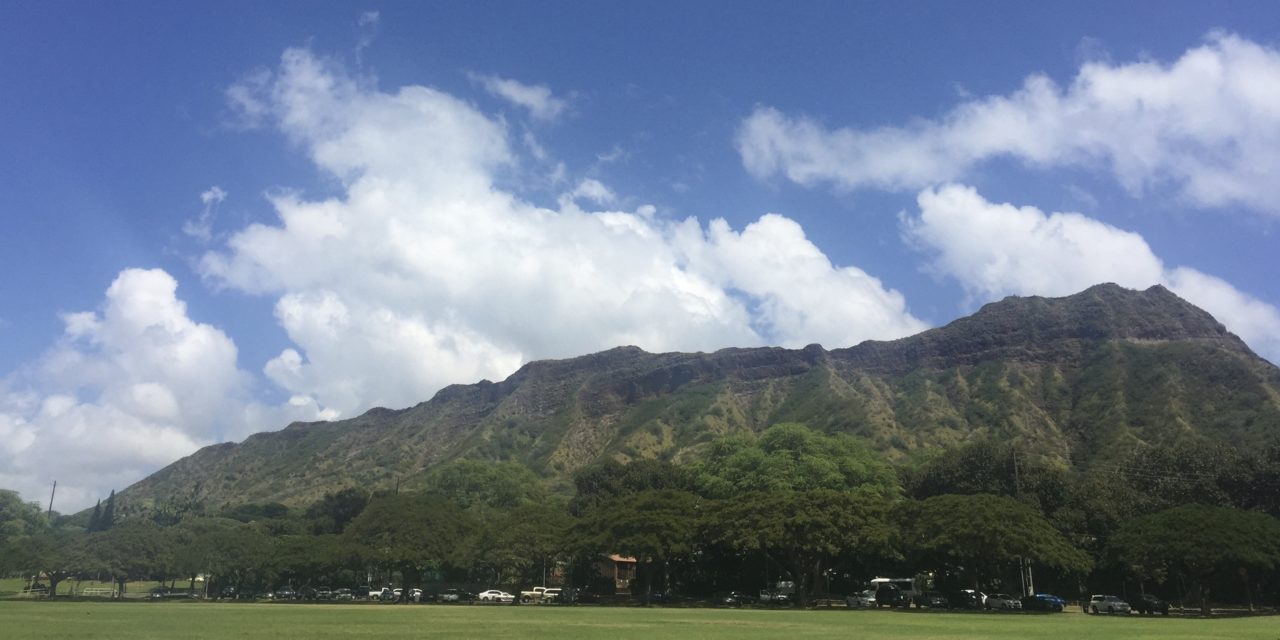By Chris Takahashi | Staff Writer
People can view the iconic sight of Diamond Head from most vantage points in Honolulu. The world-renown crater that graces the southern shore of Oʻahu is important culturally, as a well-sought out hike — by tourists and locals alike — and is also historically rooted in Hawaiian culture.
Now a state monument, the hike and historical landmark that collectively comprise the Diamond Head experience to visitors is under siege by an overabundance of foot traffic; thus, a renewed effort must be made to protect and preserve the park.
The passage of Hawai‘i Senate Bill 703 is one such effort that would address the challenge of maintaining the integrity of the Diamond Head Crater trail for years to come.
Introduced in the 2017 legislative session, SB 703 proposes that the state of Hawaiʻi shift a small percentage of funds destined for tourism marketing by the Hawaiʻi Tourism Authority and instead dedicate those funds toward the Department of Land and Natural Resources (DLNR). The DLNR oversees the maintenance of trails, historically significant sites, and beaches across the state as Denby Fawcett explained in a Civil Beat opinion piece this past March.
I do not advocate the position of curtailing visitors to hiking the Diamond Head Crater trail — I’m strongly opposed to any limitation — but I do believe it’s important to be aware of the almost astronomical rise in visitors over the past couple decades, and how that places a strain on the existing infrastructure of the park (e.g. the integrity of the trail).
Critics of such a measure may point out that Hawaiʻi is so utterly dependent on tourism in terms of the local economy that any reduction on tourism marketing would risk a reduction in tourist revenue.
That’s misguided thinking. It’s Hawai‘i. How much money do we really need to spend on tourism marketing? We could massively shrink the tourism budget by sending postcards of Waikīkī and the backdrop of Diamond Head to families in places like Ohio and chalk that up as effective, cheap-as-heck marketing.
OK, I’m being facetious, but you get the point. The marketing budget can take a small hit.
The budget for the HTA in 2017 is estimated to be $89.9 million, at least according to a January Honolulu Star-Advertiser article written by Allison Schaefers. Moving forward, the prospect of SB 703 passing the state legislature would seem likely, and the additional expenditures for the DLNR, and therefore toward state monuments like Diamond Head, will surely be a welcome relief. I can imagine at least one positive ripple effect that would result from this measure being passed.
With more funding, the DLNR can revitalize and improve the trail network across the state, particularly (but not exclusively) on the island of Oʻahu. “Off the beaten path” trails and historically significant sites will then pick up some of the slack in terms of being less visited. Visitors may very well diversify their outdoor activities on the island if other trails receive more funding for maintenance. In turn, the maddening flurry of attention that Diamond Head receives may lighten. Of course, the famed hike to the top of Diamond Head crater will still remain a crowd favorite, but the visitor footprint on trails may be more equitably distributed across the island.
I’ve hiked Diamond Head a handful of times over the past 15-plus years and have noticed how the trail has recently become very crowded. I remember my dad telling me stories of how he used to run up and down the trail as training for the Honolulu Marathon. This was, however, back in the 1980s when the trail was relatively new to residents and visitors alike. You’d be hardpressed to do that today given the constant bottlenecking along narrow sections of the trail. The hike feels less like a sojourn into nature and more like a line to get into some trendy, newly opened nightclub.
That being said, the sheer number of people hiking the trail does not dissuade me from doing the hike. I know that if I want some solitude in nature I’m going to have to seek out a hike that is seldom travelled. I imagine, for anyone who has been hiking Diamond Head since it first opened to the public, he or she must be flustered by the hoopla that is the trail experience today. Per DLNR’s website, more than 3,000 people visit Diamond Head every day, resulting in more than 1 million visits a year.
It is important that we strike a better balance in promoting our trails and historical sites by preserving them with increased funding. If Hawai‘i ultimately wants more revenue from tourism, our trails and historical sites must be better maintained than they are currently. Thus, more funding toward the DLNR will pay dividends to the economy of Hawaiʻi beyond the scope of the existing HTA budget. A greater number of tourists may ultimately visit the islands if trails and historical landmarks are better maintained with more funding.
It is critical that we recognize the hiking trails and historical state monuments for their value added to the tourist experience of visiting Hawaiʻi. Our economy is dependent on the preservation of these special places and it’s time we support measures like SB 703. It’s more than just smart policy. It’s essential to maintaining Hawaiʻi’s reputation as a world-class tourist destination.






